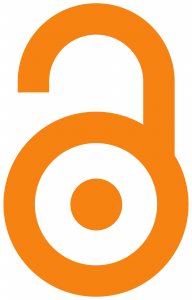Traditional publishing is on shifting sands, with growing interest in open and free access to research, without paywalls. When journals make headlines, it’s usually about the content, not the staff. Late last month, however, the prominent linguistics journal Lingua struck a very public blow against the journal’s publisher Elsevier in what amounts to academic mutiny. The […]
Traditional publishing is on shifting sands, with growing interest in open and free access to research, without paywalls.
When journals make headlines, it’s usually about the content, not the staff.
Late last month, however, the prominent linguistics journal Lingua struck a very public blow against the journal’s publisher Elsevier in what amounts to academic mutiny.
The six editors and all 31 editorial board members publically announced their resignation to Elsevier after negotiations between the board and the company to make the journal open access failed, sending renewed rumblings throughout the academic world about the uneasy power dynamic between publishers and their community.
In protest against the company’s refusal to convert Lingua into an open access journal, the staff announced that they would step down at the end of the year in order to launch their own open access journal, Glossa.
Johan Rooryck, Lingua’s executive editor since 1998, criticised Elsevier for charging prohibitively high costs for a subscription to the journal, which at $2500 per year prompted complaints of unaffordability by various libraries.
Rooryck and his colleagues wanted to transform the journal into something that would be free for anyone to read, and funded by authors paying an article publishing fee of EU$400.
Removing a subscription fee, as traditional models of academic publishing normally require, would mean that the research contained in the journal would be free to anyone. That researchers and lay people alike would be able to access it, contributing to a more equitable and open exchange of information, proponents of open access publishing argue.
But Elsevier rejected the proposal, arguing that Lingua is already a hybrid open access journal. Meaning that when authors or institutes want to make the article freely available, they can retain their intellectual property rights by paying the US$1800 article publishing charge.
The story highlights the tension between publishers and the academic community that has been bubbling under the surface since open access started to gain traction in the early 1990s.
In the traditional model of publishing, authors hand over their intellectual property to the journal, who then charges institutions and individuals a subscription fee.
But with the advent of the internet and an industry moving rapidly toward online access to information, questions arise over who does, and who should, own the information contained therein.
Moreover, do these traditional publishers create a net value in the system, or are they standing in the way?
Whatever the answer, it’s certainly profitable.
The four big publishers take the lion’s share of profits in this multi-billion dollar industry: Elsevier, Wiley, Springer and Informa (Taylor & Francis).
In a lawsuit this year, Elsevier boasted that Science Direct published almost one-quarter “of the world’s peer reviewed, full-text scientific, technical and medical content”.
The ruthlessly capitalistic and monopolistic practices of big academic publishers make Rupert Murdoch look like a socialist, British activist George Monbiot famously said in a 2011 Guardian article.
Instead of freely available access to the wealth of human knowledge, “publishers have slapped a padlock and a “keep out” sign on the gates,” he said.
BOTTLED WATER COMPANIES
It’s a system that’s not sustainable, says Dr Stephen Leeder, emeritus professor of public health and community medicine at the University of Sydney.
The former editor-in-chief of the Medical Journal of Australia has become a particularly vocal critic of the industry after he was sacked earlier this year for raising concerns about the decision to outsource production of the journal to Elsevier.
There’s been a lot of grumbling and instability in the system, with the biggest concerns being the fees charged and the monopolistic ownership of the intellectual property, Professor Leeder says.
Everyone is pretty angry about the level of profitability of the big publishers
“Everyone is pretty angry about the level of profitability of the big publishers,” says Professor Leeder. “If they charged less, presumably that would diminish.”
Publishing companies have become like bottled water companies, Professor Leeder argues.
“Water is free basically, and the authors of the papers they publish provide these papers to the publishers for nothing, and sometimes the publishers even charge to publish in their journals,” he says.
“Then the author assigns his or her intellectual property rights over to the publisher, and the publisher sends the paper out to other people in the field for so called peer review – for which they also do not pay.”
“Then they bundle it up and put it in a journal for which they charge high fees, either by way of subscription or by way of a fee for anyone who wants to get access to the published paper,” Professor Leeder continues.
“So it’s very like bottled water, but in this case the person who digs the well for the water gets nothing.”
HOW INTERNET CHANGED EVERYTHING
One of the early advantages that journals had over books was the speed at which they could disseminate information.
However, we now live in an internet world.
A majority of articles are only accessed online, and having a hardcopy of a journal is sometimes unnecessary, and always slower.
Where subscription costs made sense in a hard-copy context, the reduced need to print and distribute hard copies of the journals means that production costs are now focussed around paying wages for staff, server space for the information, and website hosting.
Production costs have plummeted.
But erecting a paywall around this information, so often funded by the taxpayer, means that students, teachers, doctors, businesspeople and journalists are locked out of cheap and easy access.
To view a single article may cost an interested consumer around $30, which can quickly add up to hundreds, if not thousands, of dollars for people undertaking substantial research.
This, proponents of open access argue, is stifling innovation, discovery and education.
“There’s a very big problem about getting open and rapid access to those findings, to the paper itself and there’s an impending risk to the data that lie behind it,” says Professor Leeder.
“People have to pay to get access to those data in a timely fashion – by which I mean days [or] weeks, after publication and on demand when you need it,” Professor Leeder says. “Because the intellectual property behind the research paper is assigned to the publishing company rather than being retained by the author.”
While a shift has been underway to remove costs to research a year or two after it was first published, this is of little help to universities and other institutions who are obliged to stick subscriptions to journals to keep their libraries up to date.
And universities have begun to feel the squeeze with rising prices for subscriptions. In 2012, Harvard University announced that subscriptions to two major publishers had become “fiscally unsustainable and academically restrictive”.
With costs to the university approaching US$3.75 million per year, journal subscriptions had become “prohibitive” and ate too much of the library budget, they wrote in a memo to the faculty members.
The MJA will cost large institutions up to $1000 per year, but Harvard University admitted some of their journals were purchased for tens of thousands of dollars.
They pointed out two publishers (without naming them) who had increased the cost by around 145% over the six years prior, noting that profits margins of 35% or more suggested the increase wasn’t solely a result of more articles becoming available.
Instead, the university called for their researchers to boycott the big, subscription publishers and instead publish their work open access journals.

OPEN ACCESS
“Publishing is changing very dramatically at the moment,” says Professor Virginia Barbour, Executive Officer of the Australasian Open Access Support Group.
“There are lots of new models emerging, and confusion in the space,” said Professor Barbour.
Substantial changes to the system may even take place in the next five years, Professor Leeder guesses.
In a major way, champions of the movement are working towards a world where the work done by researchers, often funded by the taxpayer, isn’t simply packaged up and sold back to them.
Traditionally, after researchers have done the research and written up their report, it is submitted to publications for peer review, and if accepted the copyright goes to publishers.
Critics argue that even when readers do get access to the work, it can be costly, delayed and very often there are little rights granted to reuse the work.
This stymies rapid scientific access, and is particularly problematic for people in developing countries who have limited access to libraries that can afford the subscription fees.
There are lots of new models emerging, and confusion in the space
So what is there to do if you don’t want to be a part of that system?
One of the key moments in the Open Access movement was a 2001 meeting that led to The Budapest Open Access Initiative. In 2002, this statement was released to the public, outlining the principles behind the movement:
“An old tradition and a new technology have converged to make possible an unprecedented public good. Removing access barriers to this literature will accelerate research, enrich education, share the learning of the rich with the poor and the poor with the rich, make this literature as useful as it can be, and lay the foundation for uniting humanity in a common intellectual conversation and quest for knowledge.”
At the time of print, the Directory of Open Access Journals (DOAJ) website puts the number of journals at almost 11,000, with more than 2 million individual articles available.
And Australia has been involved in open access since the early stages of the movement, with the Queensland University of Technology being the first university in the world to have an open access mandate for publications, in 2003.
Since 2012 and 2013, respectively, the NHMRC and the Australian Research Council have required all recipients of their funding to make the research available in open access format within 12 months of its publication.
This is sometimes known as ‘green’ open access (see box). Researchers can either put their accepted or published manuscripts into an online repository, such as PubMed Central, to become available after the embargo period dictated by the publisher.
Another way of publishing through ‘gold’ open access is in journals like PLOS (Public Library of Science), which are immediately open to the public.
Open access, as PLOS describes it, is “unrestricted access and unrestricted reuse”.
PLOS and many others apply a Creative Commons license to the articles, meaning that anyone is allowed to copy, distribute and reuse the articles however they see fit, so long as they are properly cited.
But where traditional publishing usually operates on a pay-to-read model, open access often takes the form of pay-to-publish.
Often this article processing fee could be covered by the researcher’s institute, but for researchers who aren’t affiliated with an institute, this kind of a fee can be problematic.
It is also the subject of key debates around the sustainability of open access models of publishing, and fairness on researchers.
Fees vary depending on the publication, but for a researcher wanting to publish in one of the PLOS journals the price upon acceptance ranges from around $1,500 to $3000.
However, many open access journals claim they can waive the fee in cases of financial hardship. Last year, PLOS claims to have spent $3 million to help fund or partially fund publication fees for those unable to pay.
STANDARDS
Another concern with open access journals is whether they are at the same standard as traditional journals.
The low cost and ease with which one can set up a website and publish PDF formatted articles has led to an increase in ‘predatory publishers’ that masquerade as legitimate journals and make money of processing fees.
However, reputable open access journals do have a peer review process, and due to the fact that peer review is almost entirely done on a volunteer basis, the open access model is not at odds with peer review.
And where creatives like musicians, book authors and movie makers rely, fundamentally, on consumers paying for the content in order to make a living themselves, researchers largely aren’t paid in the same way. Concerns about free access to creative content don’t translate in this field.
Another concern with open access is the potentially corrupting element of article processing charges.
Critics argue that by transferring the cost of production to rely on this element, there is an incentive for publishers to accept more articles than they would otherwise. In doing so, publishers would open themselves up to diluting the quality of the work published in their journals.
BOYCOTT
Meanwhile, researchers are making their thoughts known in other ways.
Backlash has also come in the form of a call for researchers themselves to boycott Elsevier journals in a bottom-up approach, which has 15,000 signatures since its launch in 2012.
The appeal was prompted by prominent Cambridge University mathematician Tim Gower’s blog post about the exorbitant rates charged by the company for access to their research.
Signatories have committed to refraining from publishing in Elsevier journals and taking part in reviewing or other contributions.
Questions will continue being asked about who deserves what, and who owns what at each stage of the growing body of research.
As the editorial board of Lingua leave to begin Glossa, a new term has arisen for the former: “Zombie Lingua”. While Elsevier technically owns the name ‘Lingua’, some claim the skills that built the goodwill and reputation of the journal is now transferred to Glossa, leaving a lookalike in its place.
| BOX: GREEN V GOLD
Open Access is broadly split into two categories: green and gold. Gold open access refers to the publishers making articles available to the public either entirely, or in part. This can take several forms itself, from being direct, delayed or a combination of both. Direct open access accounts for around two thirds of all gold open access, and means that the publishers make the entire journal open access to readers with no limitations. The alternative, delayed open access, is when the most recent work is kept behind a paywall to subscribers but over time the articles are made publicly available for free. Around a quarter of gold open access is the combination of both forms, known as hybrid open access, where the author or institution pays for the paper to be made public in what is traditionally a subscription-based journal. Green open access is when an author makes the research available through self-archiving, and can take the form of pre-published manuscript or a published paper. PubMed Central is one example of this type of archive, but every Australian university has their own version. |
This is part one of a three part series on publishing. For more, check out
Part two: How the pressure of publish or perish affects us all
Part three: The gold standard: what you should know about peer review






